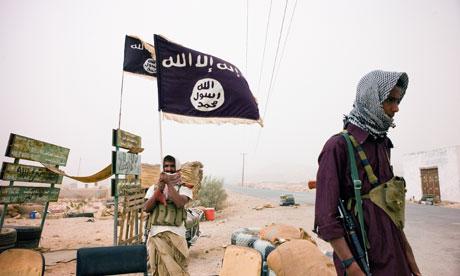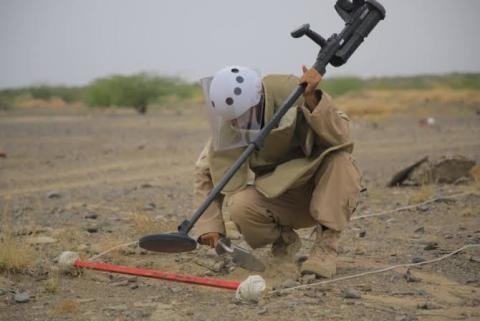A Way Out For Yemen


By Asher Orkaby*
Few were surprised by the failure of the Yemeni Geneva peace talks in mid-June between the exiled Yemeni government and the Houthi tribal movement that currently controls most of territorial Yemen. These talks, organized in part by Ismail Ould Cheikh Ahmed, the UN special envoy to Yemen, were intended at the very least to bring about a humanitarian ceasefire during the Muslim holy month of Ramadan. Despite Cheikh Ahmed’s optimism, the arrival of the Houthi delegation was delayed and the much anticipated meeting lasted less than 48 hours before the two sides left in protest.
Since the cessation of negotiations, the Saudi-led aerial bombardment has continued relentlessly, targeting military, political and commercial sites with only tenuous connections to the Houthis. Neither the UN negotiations nor the Saudi bombing campaign that has lasted for more than three months has come anywhere close to resolving the crisis in Yemen. Underlying the current focus on the Houthi military offensive, Saudi bombs and the growing humanitarian crisis is the complete collapse of the Yemeni republic. Yet, beyond this desperate situation is a possible silver lining for the future vitality of Yemen and its people.
A Federalist solution
Last September, just weeks before the Houthi tribesmen overran the capital city of Sana’a, President Abd Rabbuh Mansur Hadi proposed a federal division of Yemen into six autonomous provinces. In restructuring the internal political borders of the state, Hadi hoped to weaken the Houthi alliance whose tribal lands would be split between three different areas. He failed to anticipate the popular opposition the northern tribes would feel towards this solution as the Houthi alliance began its fateful march towards Sana’a to demand a more favorable political compromise, by force of arms if necessary. While Hadi’s proposal for territorial divisions may have sparked the current months of violence, his underlying theory may be the most amenable political solution for Yemen.
The popularity of the Houthi movement is driven in part by the northern disdain for the government in Sana’a after more than four decades of political and monetary marginalization. When Houthi leader Abdul Malik seized the capital city, his intentions were not to exercise complete control over the country, but rather to reassert the political power of the northern tribes and demand a greater share of the country’s resources. Initial attempts at securing these political concessions failed and Hadi fled the capital city, seeking refuge in the southern port city of Aden, before leaving the country entirely for exile in Saudi Arabia.
The Houthi movement continued its military advance southwards, purportedly pursuing Hadi and his supporters, while in actuality trying to spread tribal dominance nationwide, following a grand strategy that had clearly not been well thought out. The Houthi’s ill-conceived advance into Aden brought them up against the al-Hirak southern movement, another organization united in its disdain for the government in Sana’a. Al-Hirak began as a peaceful popular protest movement, before being dragged into a loose coalition of anti-Houthi military forces. Similar to the northern tribes of the Houthi movement, al-Hirak sought to achieve greater political influence in the national government while exercising a level of autonomous control over the southern regions of the country. As the clashes with Houthi tribesmen continue, supporters of al-Hirak are growing increasingly intransigent in their desire to disassociate from a corrupt and repressive northern government.
With the Houthis demanding political power and relative autonomy for the country’s northern highlands and the al-Hirak movement demanding similar concessions for the south, it seems that President Hadi’s suggested divisions may yet provide a political solution. Rather than draw artificial borders, a federal Yemeni state might best be divided along current battle lines; also a reflection of the political demands of the two largest political groups that have emerged from the current crisis.
The Houthi movement would be granted the northern region, while supporters of al-Hirak would be given the southern area. The sparsely populated eastern half of the country can form a third province, already in the hands of the semi-autonomous Hadrami merchant community. This emerging federal state of three provinces can be led by a largely ceremonial president and national council, responsible for internationally representing the country, maintaining border security, and equally sharing the country’s resources. Each province will be responsible for its own regional policing, elections and governance.
*Dr. Orkaby is a research fellow at the Crown Center for Middle East Studies at Brandeis University.

Yemeni officials on Monday condemned arrests and prosecutions by the Iran-backed Houthi militia directed against media, journalists and celebrities…

Yemen's warring parties are gearing up for new waves of conflict in 2023 amid a lack of decisive steps towards sustainable peace, adding to the suf…

The UAE will help to recruit doctors and deliver crucial supplies for hospitals in Yemen under a major healthcare drive. The Khalifa bin…